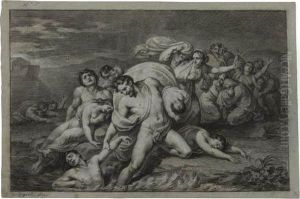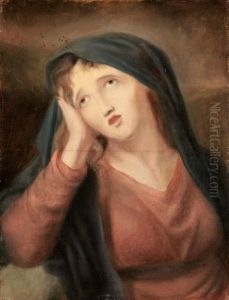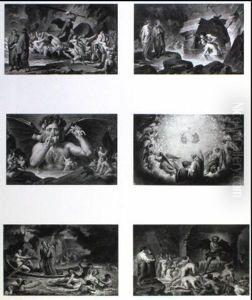Filippo Bigioli Paintings
Filippo Bigioli was an Italian painter, born in San Severino Marche in 1798. He was a prominent figure in the Italian neoclassical and historical painting scene of the 19th century. Bigioli displayed an early talent for art, which led him to pursue formal training. He studied under the guidance of Vincenzo Camuccini, a leading neoclassical painter of the time. Under Camuccini’s mentorship, Bigioli honed his skills and developed a strong foundation in the neoclassical style, which emphasized harmony, clarity, and an adherence to the traditions of classical antiquity.
Bigioli's works often reflected the neoclassical ideals of beauty, heroism, and moral virtue. He became well-known for his historical paintings, which were characterized by their grandiose scale and attention to detail. His paintings frequently depicted scenes from classical history and mythology, and he was particularly adept at capturing the human form with a sense of dignity and grace.
Throughout his career, Bigioli was active in the artistic community and contributed to various art institutions in Italy. His reputation as a skilled painter allowed him to receive commissions from notable patrons, including members of the church and the Italian aristocracy. Some of his works were displayed in prestigious exhibitions and won him acclaim.
Filippo Bigioli's contributions to Italian art were significant during his lifetime, but like many artists of his era, his name is not as widely recognized today outside of art historical circles. He died in 1878, leaving behind a body of work that continues to be appreciated for its craftsmanship and adherence to the neoclassical aesthetic. His paintings can be found in museums and collections in Italy, offering a glimpse into the rich artistic heritage of the 19th century and the enduring legacy of the neoclassical movement.



